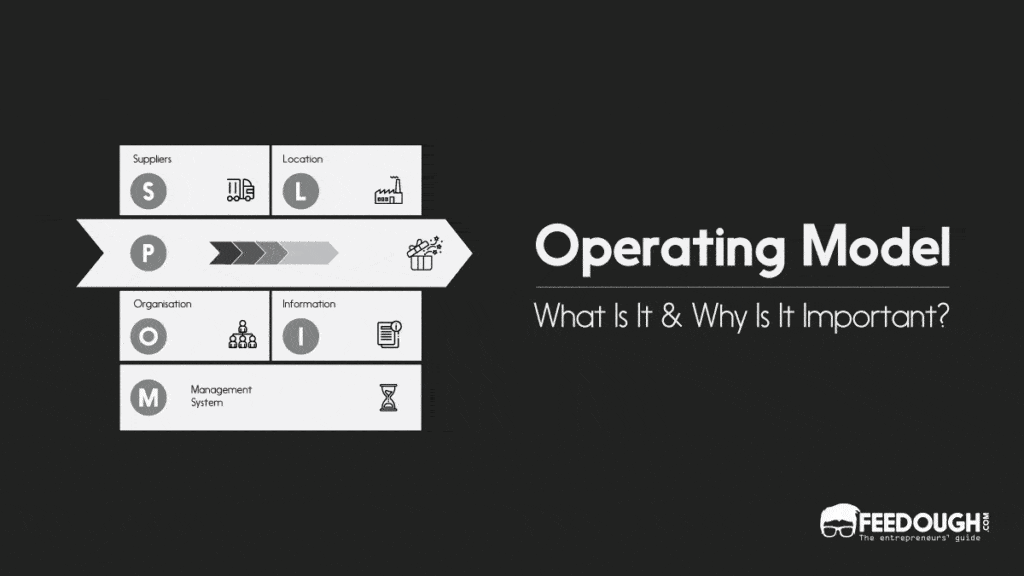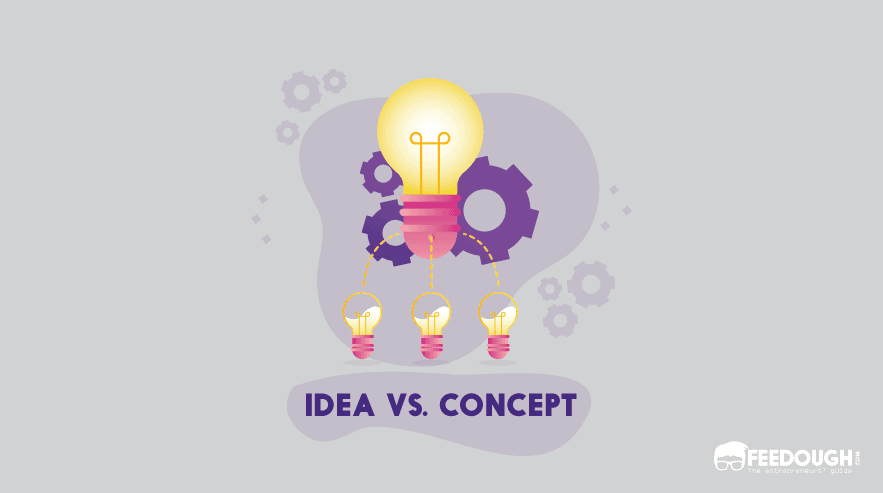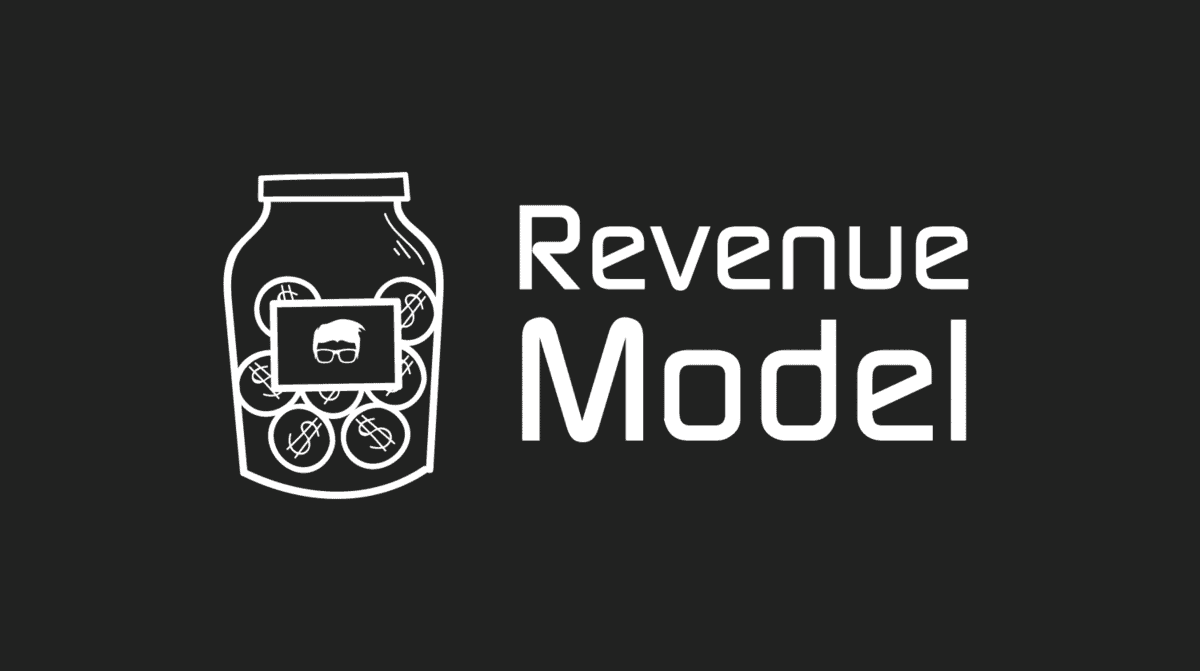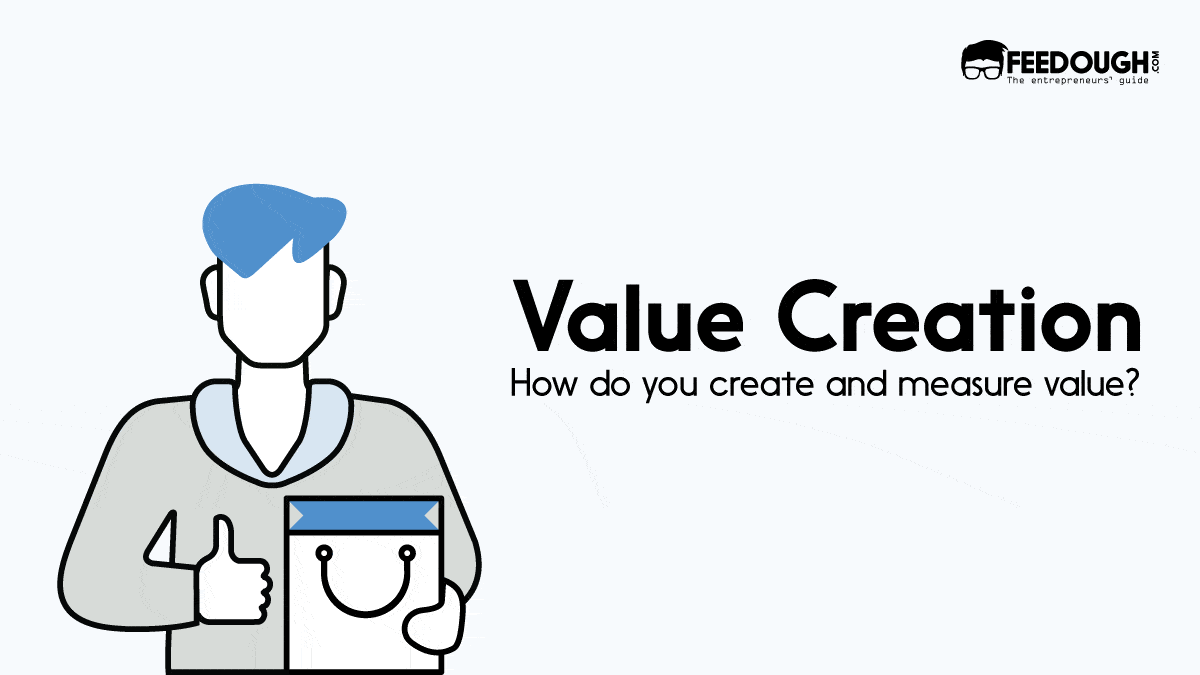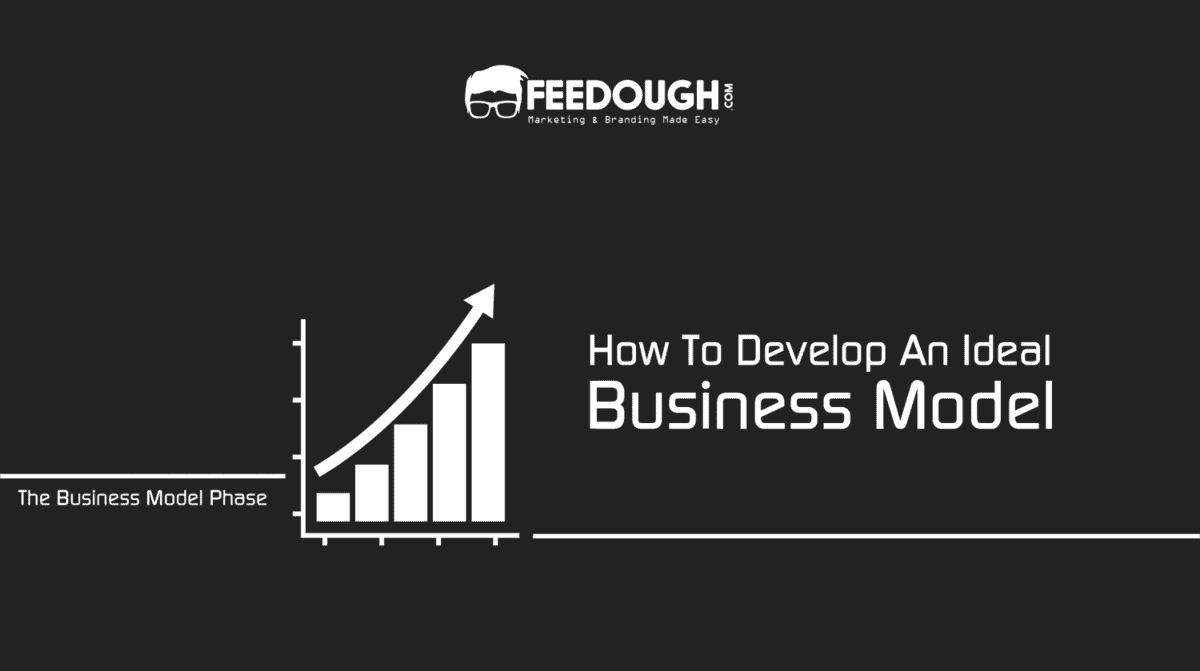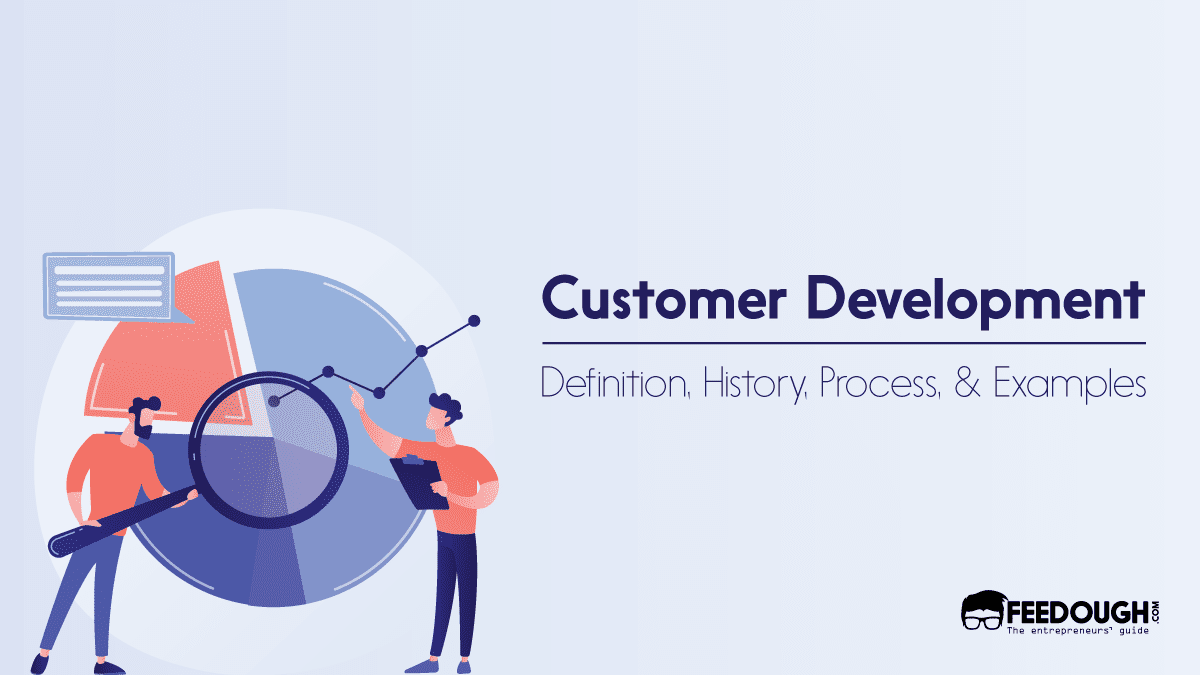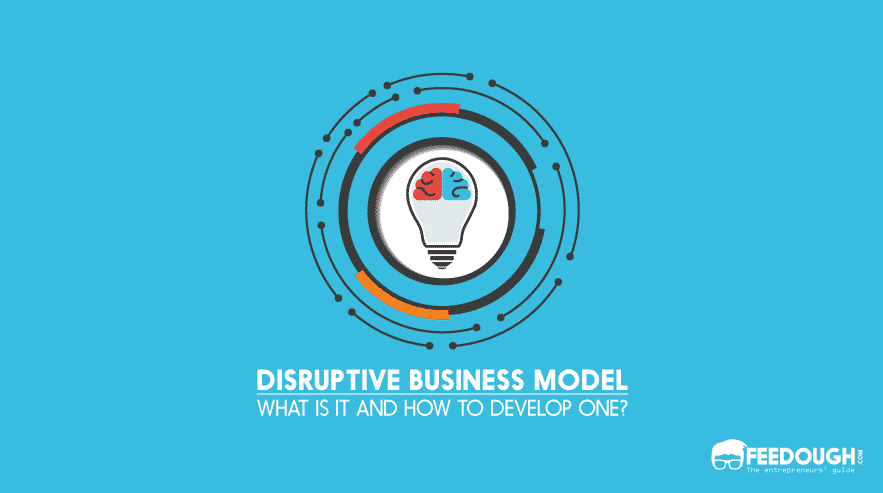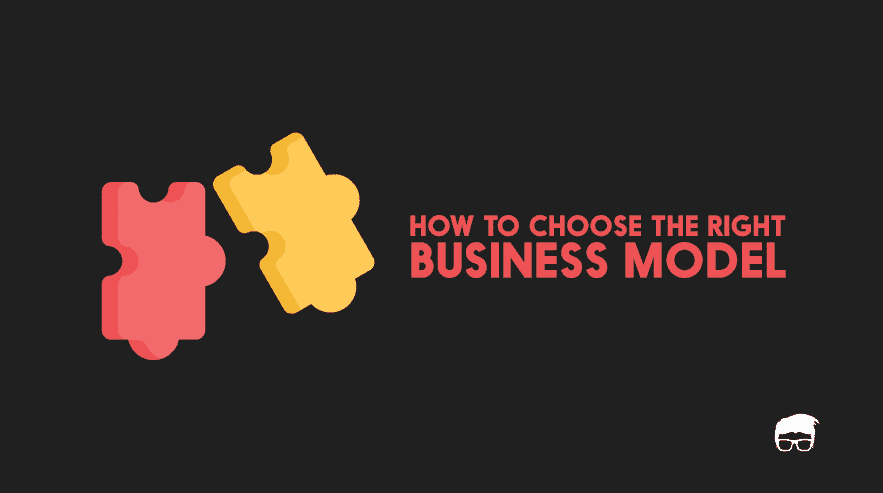A business has to do two things right to stay in the market for long – create value for the customers and find a way to make money out of it.
Value creation refers to providing utility to the customer by getting their job done, solving their pains, and providing value additions. It forms the foundation of the business.
But the process of creating and delivering value requires the business to have a well-defined operating model that answers the question of ‘how does the business does what it promises’. The operating model breaks the process of value delivery into components showing how everything works and who does what.
What Is An Operating Model?
An operating model is a conceptual structure that supports the viability of the business and explains how it operates so as to deliver value to its customers.
The business is an intricate system designed to deliver value. The operating model breaks this system into components, showing how everything works.
It’s an essential conceptual structure that elaborates the backend of the business. It helps:
- The business to fill the gap between strategy and execution,
- The leaders to identify problems that affect the performance, and
- Other participants to understand the business concept and operations.
The operating model forms an integral component of the business model, defining:
- The key activities of the business,
- The partners that help in value creation,
- The resources the business requires,
- How the customers are acquired, engaged and retained, and
- The channels the business uses to deliver value to the customers.
In simple terms, the operating model visualises the sequence of steps a business takes to create and deliver value to the final consumer and everything that supports it in doing so. This sequence of steps is the value delivery process.
What Is The Value Delivery Process?

The value delivery process is the visualisation of how value is transferred from a business to the customer. It’s the blueprint of every step involved in bringing a product from conception to distribution, and everything in between – like purchasing materials, partnering with dealers, marketing, etc.
For a grocery retailer, the value delivery process would work in a way similar to this:
- Purchase the offerings from a wholesaler or an agency,
- Stock the offerings in the retail store,
- Hire a helper to help in stocking and selling.
- Develop a good relationship with every customer who visits the store by assisting them in their purchase decisions,
- Market the offering to the customers during their store visit, and
- Sell the offering.
This example represents how this grocery store delivers value (groceries and good relations) to its customers.
But not all companies have such a simple value delivery chain.
For example, Uber’s value delivery process would be a two-faced structure where the company partners with drivers promising them more customers, and parallelly builds a customer-oriented brand where the customer can book a cab with a few taps on their smartphones. While the driver focuses just on fulfilling cab rides, Uber makes sure to build a brand through standardised pricing, safe cabs, and other features to increase the demand of its offering.
The Components of an Operating Model
While the value delivery process forms an important component of the operating model, it only answers the question of ‘what is the process’, not focusing much on how the process works and how everything is linked.
The operating model visualises a lot more than just the work that is to be done. Its components are derived from the business model canvas that includes:
- Key Activities: How the business delivers value using the value delivery process.
- Key Partners: The external key stakeholders who help business in delivering value.
- Key Resources: The important resources and inputs that go into developing and delivering value.
- Channels of Distribution: The communication and delivery channels a business uses to deliver value to the customer.
- Customer Relationships: The type of relationship the business has with the specific customer segment.
Key Activities
It includes all the value delivery processes that the business undertakes. In simple terms, it answers how the business delivers the promised value to the customers. Key activities are the most important tasks that form the spine of the business.
For a manufacturing company, the key activities would include procuring raw materials, production, delivering the goods to customers, etc.
Key Partners
Key partners are all the external key stakeholders like suppliers, manufacturers, suppliers, etc., that help the company deliver the value to the end consumer.
For Uber, the key partners include cab drivers, API providers like Google Maps, Payment Processors, etc.
Key Resources
It includes all the important resources and inputs required to develop and deliver value to the customer. These are the main assets the business requires to develop the end product.
They include
- Physical Resources: tangible resources like equipment, inventory, buildings, manufacturing plants, raw materials, etc.
- Intellectual Resources: intangible resources like brand, patents, IP, copyrights, etc.
- Human Resources: Employees, contractors, and other workers.
- Financial Resources: monetary resources like cash, credit, stock, etc.
Channels of Distribution
Key channels of an operating model describe the channels the business use to communicate and deliver value to the customer. It includes all the marketing, sales, and distribution channels.
Channels are the touchpoints that play an essential role in customer experience. They are categorised into two types:
- Owned channels: are the channels owned and operated by the business, like the business website.
- Partner channels: These are channels not owned or operated by the business. These channels provide a better reach than the owned channels.
Customer Relationship
It describes the type of relationship the business establishes with a specific customer segment. The relationship can be any of the several types.
- Transactional: The business interacts with the customer only during the transaction. It doesn’t build any relationship with the customer. For example, a vending machine or a kiosk usually builds a transactional relationship with the customer.
- Long-term: This refers to a deep, long-term relationship with the customer where the business interacts with the customer regularly.
- Personal Assistance: This relationship stands on human interaction where the customer communicates with a real customer representative to get help before, during, or after the buying process.
- Dedicated personal assistance: This relationship involves dedicating a customer representative specifically to an individual customer.
- Self-service: A company doesn’t maintain a direct relationship with the customer but provides them with the necessary means to help themselves.
- Automated services: It’s a mix of self-service and automated processes.
- Communities: Developing a relationship with the customers by developing a platform where users solve others’ problems by being a part of the community.
- Co-creation: Co-creation is when the business takes the help of the customers to co-create value for all. For example, making the customers write reviews, taking feedback on the design, etc.
- Switching costs: It indicates how easy or difficult it is for a customer to switch to a different alternative. If it’s difficult, a strong relationship is already built.
Andrew Campbell’s Operating Model Canvas
Andrew Campbell took inspiration from the business model canvas and tried elaborating the operating model’s components into six parts, namely:
- Process: Describing the key activities or the value delivery process.
- Organisation: Focusing on the organisational structure – who does the work and how are they organised.
- Locations: Where is the work done, and what assets does the business require in these locations.
- Information: The information systems that support the work and value delivery.
- Suppliers: The key partners who help in value creation and delivery.
- Management Systems: Planning, budgeting, performance, risk management, continuous improvement and people management processes that the organisation utilises.
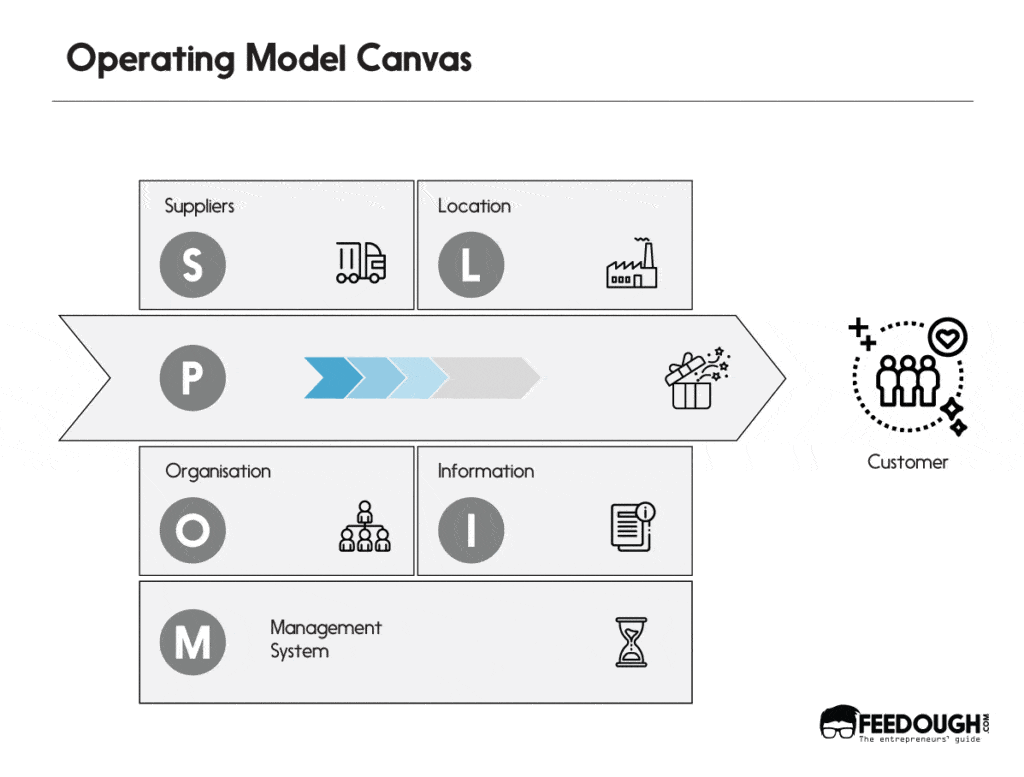
In essence, the operating model canvas roughly populates the three most essential sections of the business model canvas while giving hints to populate the other two.
Key Activities = Processes
Key Partners = Suppliers
Key Resources = Organisation, Locations, Information, Management Systems
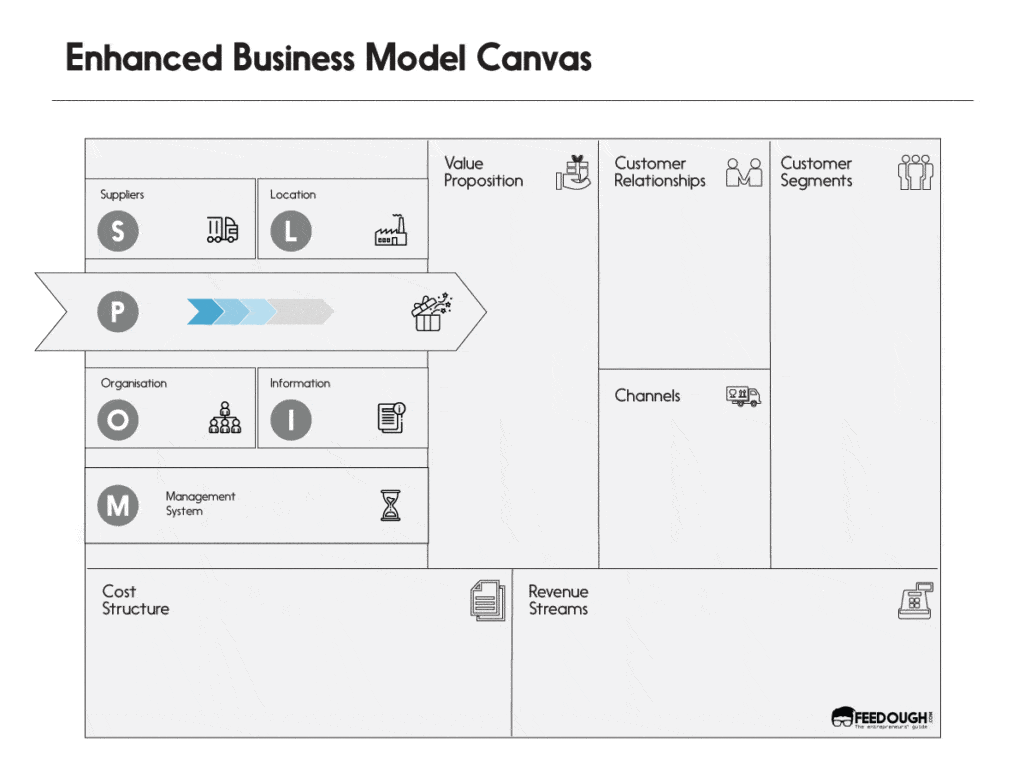
Why Is Understanding The Operating Model Important?
Understanding and developing the operating model before the concept is converted into an actual business or conceptualising a pivot is an important practice. It is because the operating model:
- Is A Spine Of The Business Model: The operating model elaborates the business’s backend and defines how the business does what it promises to the customers. Without the operating model, the business model is just an idea.
- Brings Clarity: It brings in the clarity of what needs to be done when, by whom, and what all is required to do the same. Without the operating model, complex business operations can turn into a mess.
- Saves Resources: The value delivery process clearly allocates the resources in every step. It avoids duplication and saves resources.
- Aids Revenue Generation: Operating model is what forms the base for the business’s revenue model. Without the operating model, the revenue model can’t exist.
The Startup Process
We know how important your dream business is to you. Therefore, we’ve come up with an all in one guide: The Startup Process to help you turn your vision into reality.
A startup consultant, digital marketer, traveller, and philomath. Aashish has worked with over 20 startups and successfully helped them ideate, raise money, and succeed. When not working, he can be found hiking, camping, and stargazing.
